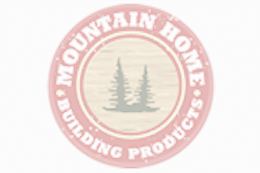Log Home Finishing Terms

Building, maintaining or living in a log home? There may be some terms you don’t know! Mountain Home Building Products is here to help with our glossary of log home finishing terms!
Adhesive Failure: Occurs when a sealant pulls away from the substrate. This type of failure is typically present when there is a compatibility issue between the finish and the sealant.
Back Brush: The act of vigorously brushing the stain into the substrate. This is a critical step that should not be overlooked on the exterior.
Backer Rod: Usually a foam material used to provide 2-point adhesion to the sealant.
Borate: A preservative used to protect wood from insect infestations and rot.
Caulking: A common type of sealant material used on log homes around doors, windows, checks, between logs and small horizontal joints.
Check: A crack-like opening that forms in a log as it shrinks and dries. Checks that are ¼ inch or greater and facing upwards should be sealed.
Chinking: Sealant material used on log homes designed to resemble mortar but remains soft and pliable to keep up with the movement of the logs. Chinking is mainly used in large horizontal joints ranging from 1 to 4 inches and is designed to stand out from the logs.
Chemical Stripping: Chemicals applied prior to pressure washing to help clean or strip a finish from the surface of the wood.
Cohesive Failure: Occurs when a sealant pulls away from itself and often exists when there is excessive movement in the substrate.
Compatibility: Effectiveness of a finish and sealant properly working together.
Corn Cob Blasting: Environmentally friendly process using crushed corn cobs to clean or remove stains from logs. It is similar to but less aggressive than sandblasting.
Felting & Fuzzing: Common side effect associated with pressure washing and is best described as a surface texture that resembles that of a tennis ball.
Micro checking: Small checks that occur when moisture is rapidly pulled from a log. This mainly occurs on the exterior of log homes but can happen on the interior.
Mill glaze: A thin coating of sap, sugars or water that seep to the surface of a log during the milling process.
Moisture content: The amount of water present in wood which is usually expressed as the percentage weight of water relative to the overall dry weight of the wood.
Mold/Mildew: Typically a black discoloration on the surface of wood.
Oil Based Stain: Commonly used stain that is easy to work with and designed to penetrate wood. Clean up performed with solvents. Note: Use of respirator is highly recommended.
Oxalic Acid: Highly toxic cleaner works well in removing redwood tanning stains and rust discoloration. Not effective against mold and mildew.
Oxygenated Bleach (Sodium Percarbonate Cleaner): Bleach that kills mold and mildew but does not harm the wood or the environment. Best cleaner for logs. More expensive than other cleaners.
Pressure Washing: Common log cleaning process utilizes pressurized water applied through a fan nozzle to the substrate. Wood must be allowed to dry to moisture content below 20% before staining.
Settlement: The movement of walls that occurs over time due to the shrinkage of logs as they lose their moisture.
Shrinkage: The decreasing in size of a log as it loses some of its moisture content over time.
Sap Stain: Typically a blue green discoloration on the surface of wood.
Substrate Failure: Occurs when the substrate is pulled from itself.
TSP (Trisodium Phosphate): A product mixed with water and used to clean logs and redwood decks.
Two Point Adhesion: A proper sealant joint. Backer rod needs to be installed behind the sealant in order to get adhesion to the top and bottom of the joint. The sealant should not adhere to the back of the joint those promoting two points of contact with the substrate.
Water & Oil Emulsion Stain: Environmentally friendly stain designed to form a surface bond and penetrate into the substrate. Additionally, it must be elastic and allow the wood to breathe. Note: Clean up is performed with soap and water.
Water Based Stain: Environmentally friendly stain designed to bond to the surface of the substrate. Additionally, it must be highly elastic and allow the wood to breathe. Note: Dries relatively quickly which can lead to lap marks and brush marks if the proper application is not followed. Clean up is performed with soap and water.
Please contact us with any comments, questions or requests for additional information.
